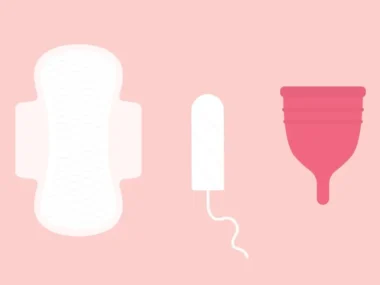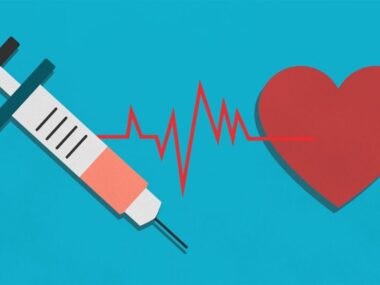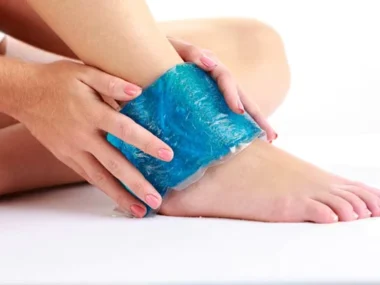Chickenpox is normally accompanied by itchy blisters over large areas of the body, followed with fever and fatigue.
Chickenpox is a viral infection that majorly plaques children at a certain stage of childhood.
It is known to be followed by itchy, fluid-filled blisters on large areas of the skin’s surface.
The infection is highly contagious and can flawlessly spread to anyone who hasn’t previously had it or has not been vaccinated against it.
If either you or your child has been vaccinated against chickenpox, the risk of catching the disease is very minimal. Still, a small percentage of vaccinated people will get chickenpox, usually with very mild symptoms.
It’s very uncommon to have the disease a second time if you’ve had it once.
Even in children who haven’t been vaccinated, chickenpox usually doesn’t cause severe or life-threatening symptoms. But in a few number of cases, the disease can have dangerous complications.
If you are sure that you or your child is showing signs of chickenpox, it’s important to call your doctor to make an appointment.
While most cases of chickenpox don’t require special treatment other than home remedies or over-the-counter products to ease discomfort, a doctor’s visit can help rule out other diseases than may seem like chickenpox but require urgent treatment.
Your physician will diagnose chickenpox on the basis of its symptoms, and possibly on laboratory tests if the diagnosis is in doubt.
Chickenpox Rash Phases and Timeline
The most visible symptom of chickenpox is a Rash that causes itchy, fluid-filled blisters to form, typically across large areas of the skin.
These blisters progressively develop a crust and turn into scabs, which fall off over time as the skin under them heals.
Though chickenpox sores can cause scarring, particularly if they’re scratched, they typically don’t cause any long-term functional damage to your skin.
A chickenpox rash typically affects your face, chest, and back, before spreading to other areas of the body.
Chickenpox rash and blisters can even develop inside your mouth, on your eyelids, or in your genital area. (3)
Symptoms of chickenpox typically develop 10 to 21 days after you’ve been exposed to the virus.
You may see certain symptoms one to two days before you develop a rash, such as:
- Fever
- Tiredness
- Headache
- Reduced appetite
Once a chickenpox rash develops, it goes through three phases:
Papules This refers to raised pink or red bumps, which is how a chickenpox rash starts out. These bumps typically develop over many days.
Vesicles This refers to the small, itchy, fluid-filled blisters that develop from the red bumps over a period of about one day. The blisters usually go on to break and leak fluid.
Scabs Once the blisters break, a crust will form over them, which soon becomes a scab. These scabs will take a few days to fall off, once the skin under them has healed.
It’s normal for new bumps to appear for a few days as your chickenpox rash develops. This means that you may have all three stages of the rash at the same time, since it usually takes only about a day for a bump to progress to a blister and then a scab.
Your chickenpox will be contagious from a day or two before your rash develops until all your blisters have broken and developed a crust.
Who Is Mostly at Risk for Severe Chickenpox Symptoms?
In most children, symptoms of chickenpox are mild and don’t result to major distress or pain, or any significant lasting damage.
But certain groups of people are more likely to develop severe symptoms of chickenpox, and possibly complications. These groups include:
- Infants
- Teenagers
- Adults
- Pregnant women
- People with a weakened immune system (due to a health condition or medical treatment)
In severe cases of chickenpox, the rash may afflict your whole body, and you may develop a higher fever and feel more exhausted than in milder cases.
New bumps may appear for a longer time in severe chickenpox cases, before they go through the typical rash cycle.
A severe chickenpox rash may also affect your throat, eyes, anus, urethra, or vagina.
Visiting Your Doctor for a Chickenpox Diagnosis
The first step in getting a chickenpox diagnosis is to call your doctor to make an appointment.
It’s important to call ahead rather than just visit a walk-in clinic because of how contagious chickenpox is. Your healthcare provider may want you to use a different entrance to the building to avoid exposing the people in the waiting room to the virus.
At the time you make your appointment, you may want to ask your healthcare provider:
- Whether you or your child should follow any precautions or restrictions, such as avoiding certain activities or staying home
- What information you should bring to your appointment
It’s a good idea to bring the following information to your appointment whether or not it’s asked for:
- History of symptoms (what they are and when they began)
- How you or your child may have been exposed to chickenpox
- Any ongoing health conditions or medications
- Questions you have for your doctor
It’s usually possible for your doctor to diagnose chickenpox by examining your rash and taking any other symptoms into account.
In rare cases, your doctor may take a blood sample, or a sample of the liquid from one of your blisters, for testing.
This allows a laboratory technician to identify your virus based on the presence of antibodies, which are proteins that your immune system produces to fight off infection.
But in most cases, the symptoms of chickenpox are so clear that lab tests are unnecessary.
At your appointment, your doctor may ask you a number of questions about you or your child, such as:
- Whether you or your child has had a chickenpox vaccine
- Whether you or your child has any ongoing medical conditions
- Whether your child goes to school or day care
- Whether you’re pregnant or breastfeeding (2)
- What symptoms you’ve noticed (including issues that may not seem related)
- When these symptoms began, and how they’ve changed
- Whether anyone else you know has shown signs of chickenpox recently





